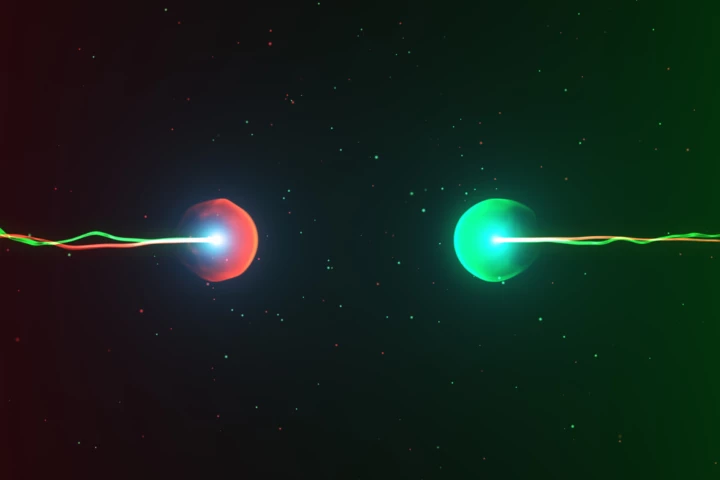Antimatter
-
Physicists have created the heaviest clumps of antimatter particles ever seen. Known as antihyperhydrogen-4, this strange stuff could help us solve some of the most puzzling physics mysteries.
-
As spooky season wraps, NASA has a final Halloween treat. Using two X-ray telescopes, astronomers have visualized the ‘bones’ in one of space's most haunting phenomena, the pulsar wind nebula MSH 15-52, also known as the ‘cosmic hand' or 'hand of God'.
-
Gravity's effect on antimatter has been a point of disagreement between physicists. New research may have settled the debate by finding that antimatter is affected by gravity in the same way as matter, ruling out the existence of repulsive 'antigravity.'
-
This month marks the 10th anniversary of the discovery of the Higgs boson. But what exactly is this particle, and why is it so important? What has it taught us in the last decade – and more importantly, what could it teach us in the next decade?
-
Physicists at CERN have discovered that antimatter falls down. It sounds obvious, but scientists hadn’t yet been able to confirm that it responds to gravity in the same way as regular matter does. A new experiment provides the best answer so far.
-
Normal matter has an “evil twin” that annihilates on contact, and despite decades of study antimatter remains very mysterious. So what actually is it? Where is it? Why is it important to understand? And why hasn’t it already destroyed the universe?
-
Antimatter is hard to study, not least because it annihilates any container you try to put it in. Now CERN physicists have developed a new antimatter trap that can cool samples in seconds, which could help unlock a fundamental mystery of the universe.
-
Physicists at CERN have discovered an exotic new particle that’s quite charming. Known as Tcc+, the particle belongs to a rare class called tetraquarks, and its unusual composition makes it the longest-lived exotic hadron found so far.
-
Physicists have outlined a relatively simple new way to create antimatter, by firing two lasers at each other to reproduce the conditions near a neutron star, converting light into matter and antimatter. Doing so could unlock cosmological mysteries.
-
Space is an exceptionally strange place, full of signals and observations that defy our understanding of the universe. In trying to explain these mysteries, sometimes astronomers hypothesize extremely exotic objects that we haven’t yet found.
-
A subatomic particle has been found switching between matter and antimatter, in Large Hadron Collider data. It turns out an unfathomably tiny weight difference between two particles could have saved the universe from annihilation soon after it began.
-
Antimatter is thought to have been mostly banished from our universe. But could it still be lurking out there? Astronomers have now identified signals from possible antimatter stars, and calculated how many of them might be hiding in our own galaxy.
Load More











